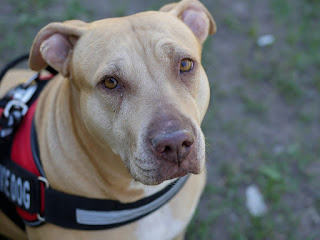Dog Emergency care

Dogs will be dogs, and thanks to this special position, there will be a world of games, activities and fun. Sometimes, however, pain, rupture, and even more severe disasters with the dog may occur, or serious and sudden health conditions may occur. Your duty as a human companion is to try to avoid problems in preparation for any possible situation.
Immediate action can mean the difference between your pet's life and death. First aid, as the name implies, is the initial procedure that a dog will receive after an incident to stabilize or comfort. Usually, your goal is to bring the veterinarian as soon as possible or at least consult with the veterinarian. Send your veterinarian and the nearest 24-hour emergency room number to the available place, and make sure you have the Animal Disease Control Center number. Keep a well-equipped first aid kit in an easily accessible place. There is an ice pack and extra handbags as well as larger items, such as a table or blanket or a towel that can be folded for strollers.
Consider dog first aid and CPR training courses; The CPR should only be provided if you know exactly what you are doing.
If you live in an area with frequent tornadoes or other natural disasters, it is useful to develop a well-considered action plan, including a detailed evacuation plan and additional means of survival. Ask your veterinarian or local humanitarian community about emergency services available in your area.
When it's unthinkable
Your insane perception of you and peacekeeping are two of the most important things to keep in mind in an emergency: your dog will notice your mood. If necessary, take a few seconds to recover your soul.
Regardless of whether you attacked another animal that was struck by the free electric cable, or if you inhaled a poisonous anti-locking solution that is spilled on the ground, soothe your dog as much as possible. If it looks like you might bite for fear or pain, throw it away and then fill it.
Compare your dog's signs with normal signs as quickly as possible. Your resting heart should be between 80 and 120 beats per minute and should use 10 to 30 breaths per minute, depending on your size, age, race, and physical condition. The normal rectal temperature should be in the range of 100 to 102.5 degrees F (37.8 to 39.2 degrees C).
If this measurement is too disturbing, check your ears, nose and extremities. If it's cooler or hotter than normal, your body temperature is likely to be low.
If you notice pieces, scratches or other signs of injury, take it to your veterinarian. If you have to carry a carriage, act carefully; If you have to stop moving, take an assistant and take him to a temporary stretcher.
Transportation of injured dog
Before you can take your dog vet, you will have to decide whether to arrest, load, or simply help get in the car. Of course, this is determined by your dog's size and weight as well as the extent of your injuries. If you squeeze a dog into a broken bone, it depends on the fracture.
With a mobile fracture where the limb is tucked beneath the fracture, create a temporary slit that wraps soft, densely filled limbs such as cotton rolls or even disposable nappies. Place a thick piece of cardboard over the entire end of the wound, then fix it with a flexible link. It will retain the limb, prevent nerve damage and ensure that there is no break in the blood stream.
Do not try to break or stop your leg if part of it is hanging, but you are not sure about the break. If you can not blend the composite fracture, simply place a clean band on the exposed rain areas. Try to properly take your dog to an improvised carriage or raise your dog yourself. A small or medium dog can be placed in a box to make it easier to move. A partial paralysis of the extremities with minor pain or pain may indicate a vertebral fracture, so do not take your dog in this case.
Do not immobilize it on board to avoid further spinal cord injuries. Try to keep your dog silent and quiet so that it can be parked in a car; Do it as carefully as possible to avoid pain. Call ahead for a veterinarian to be ready for you.




Thanks for sharing a valueable information about dogs emergency care.learn more about dogs.
ReplyDeletedogs.